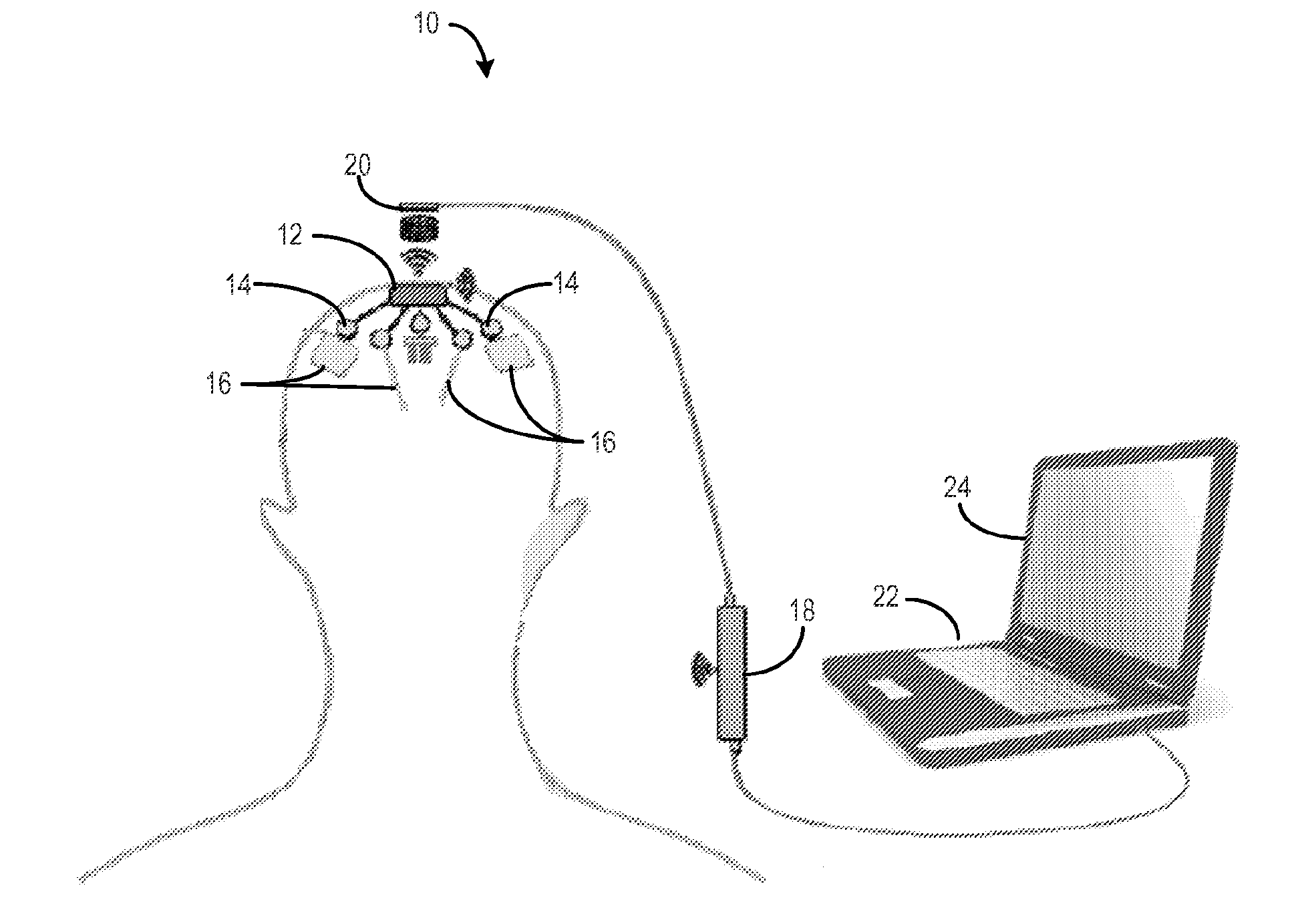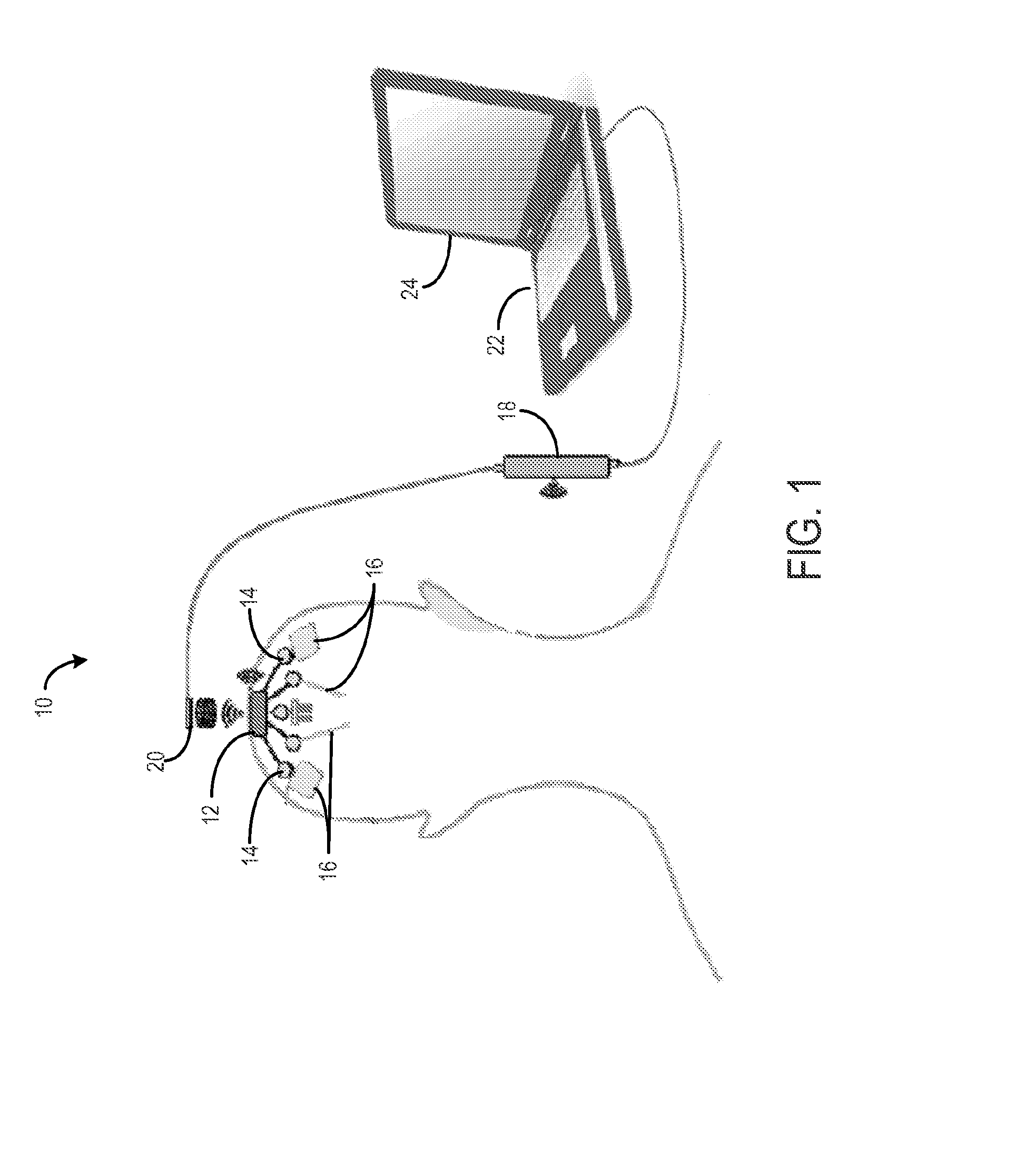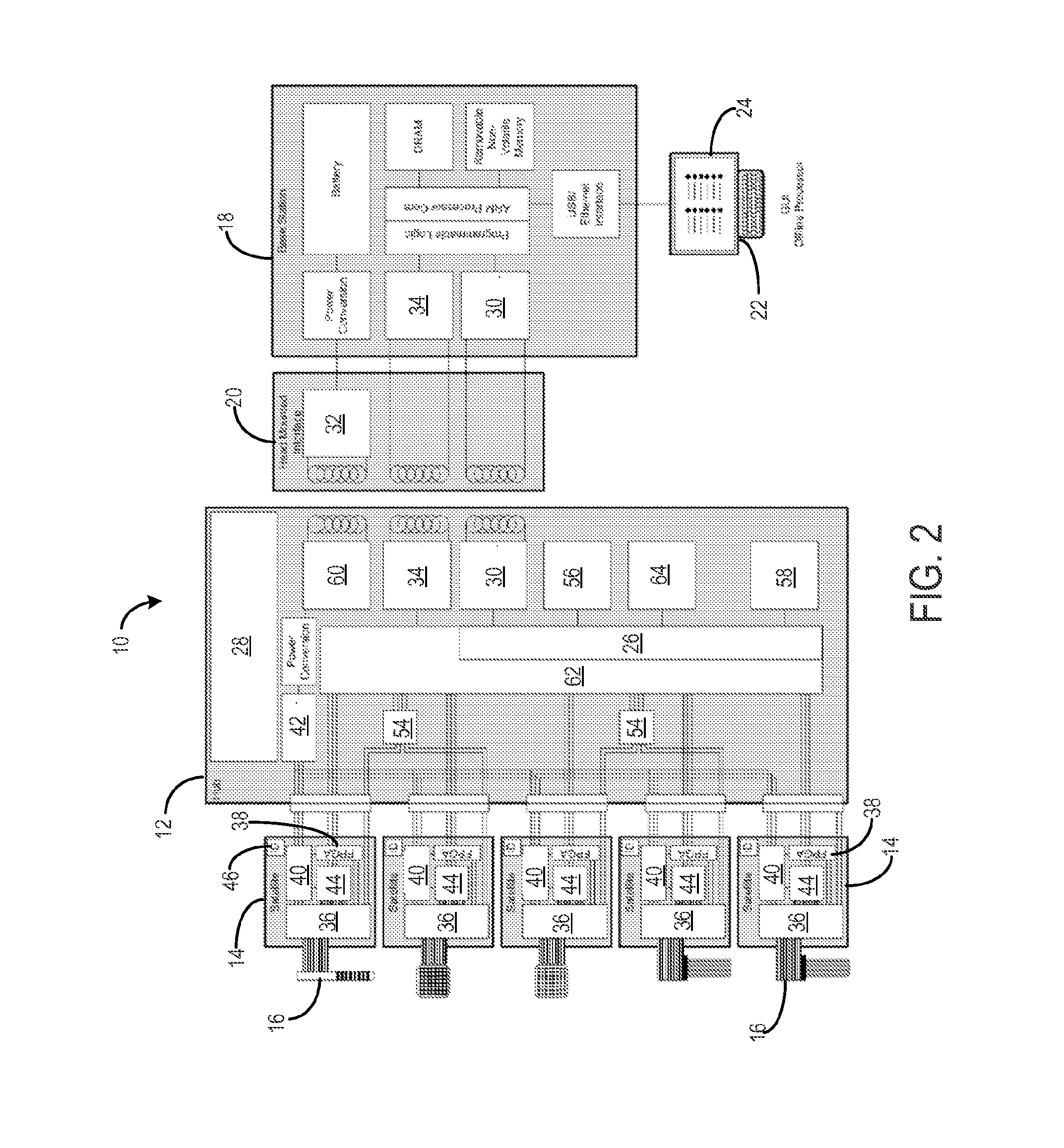Method for cross-diagnostic identification and treatment of neurologic features underpinning mental and emotional disorders
a neurologic and cross-diagnostic technology, applied in the field of multi-modal imaging techniques, can solve the problems of psychiatric treatment failing to cure a substantial fraction of patients, affecting the work efficiency of war fighters and civilians, and affecting the quality of life of patients, so as to improve the information of the bci, improve the match, and improve the effect of the decoder
- Summary
- Abstract
- Description
- Claims
- Application Information
AI Technical Summary
Benefits of technology
Problems solved by technology
Method used
Image
Examples
example
[0127]The prefrontal cortex may be a natural source of intentional emotion regulation signals, and therefore the BCI controller may not only infer the patient's emotional state, but may also decode volitionally controlled brain signals. The desire to suppress or amplify emotional experiences is already contained in PFC activity, and that activity may correlate directly with patients' ability to succeed in emotion regulation. Further, PFC neurons are flexible and may regularly re-tune themselves into new ensembles, encoding complex features of multiple tasks. Thus, given that plasticity may be important for successful affective decoding and control, a BCI that decodes signals from highly plastic cortex is more likely to succeed, because the brain can more readily re-tune to communicate a clinical need.
[0128]Unifying the themes above, one approach to affective BCI for closed-loop DBS is to record volitionally controlled signals from PFC, then use that activity as a reflection of the p...
PUM
 Login to View More
Login to View More Abstract
Description
Claims
Application Information
 Login to View More
Login to View More - R&D
- Intellectual Property
- Life Sciences
- Materials
- Tech Scout
- Unparalleled Data Quality
- Higher Quality Content
- 60% Fewer Hallucinations
Browse by: Latest US Patents, China's latest patents, Technical Efficacy Thesaurus, Application Domain, Technology Topic, Popular Technical Reports.
© 2025 PatSnap. All rights reserved.Legal|Privacy policy|Modern Slavery Act Transparency Statement|Sitemap|About US| Contact US: help@patsnap.com



